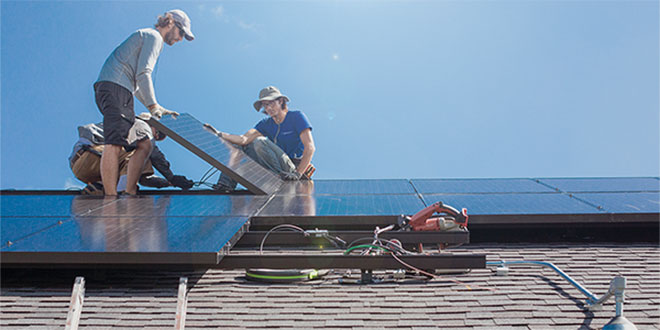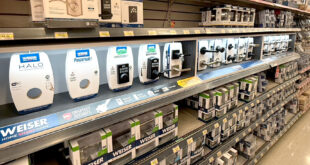To view a PDF of this story, click here.
By Renee Changnon, rchangnon@nrha.org
A Brighter Future
For a rising number of today’s consumers, updating their homes means more than just improving the look and feel of their living spaces. Painting the walls or installing new kitchen cabinets is still a priority for homeowners, but projects that provide a return on their investments are increasingly important.
One home improvement project more consumers are turning to is the integration of solar technology to power the home. And while big-box retailers may have solar products in stock, there is a lot of specialized knowledge required to get the job done right.
That’s why consumers in Austin, Texas, interested in integrating solar technologies in their homes turn to TreeHouse. Unlike their competitors, the knowledgeable staff at TreeHouse helps consumers improve the efficiency of their homes by providing expert guidance through each step of the process.
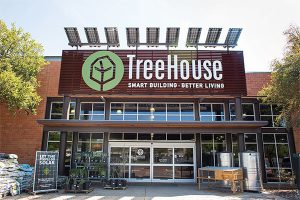
In the years since the unique Texas-based business was founded, it has gained interest from national news outlets like Inc., Fast Company and The Guardian, which even nicknamed the home improvement company the “green alternative to Home Depot.”
While following in the footsteps of TreeHouse may not be the right move for your business, there is a lot you can learn from this best-in-class retailer.
Solar energy has been a niche alternative solution for some homeowners, but technological advancements and decreasing prices have made it accessible to more consumers. TreeHouse offers knowledge and top-quality products to help homeowners power their homes efficiently for years to come.
Hardware Retailing spoke with TreeHouse’s vice president of operations, Graeme Waitzkin, to discuss solar energy technology, the company’s approach to whole-home performance and where he envisions the future of solar technology going.
In this story you will learn how the market for solar technology has evolved in recent years. You’ll also discover techniques TreeHouse implements to educate, sell and install solar products. Plus, Waitzkin shares his expert insights on the future of this technology so you can plan ahead.
The Evolution of the Solar Energy Industry
Since TreeHouse opened its doors in 2011, the original location in Austin has transitioned from a more traditional home improvement store with a layout featuring aisles for product categories to a more project-based format, which features three distinct areas: home performance, design and outdoor living.
- Performance—includes everything from windows and insulation to roofing and solar energy;
- Design—includes kitchen and bath, flooring and paint;
- Outdoor Living—projects like rainwater harvesting.
While solar energy products haven’t always been part of the business, Waitzkin says the company realized that renewable energy needed to be a bigger part of the equation.
“The reason we decided to add solar technology as a project offering at TreeHouse was that we wanted to provide consumers with top-notch whole-home performance,” he says. “We decided if we’re going to make a recommendation on how to improve the entire home, renewable energy on site has to be a part of that.”
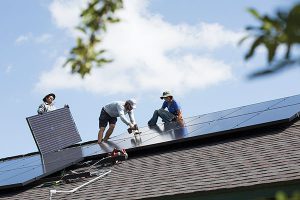
Over the years, the solar industry has seen many advancements and changes that are helping it move from a home improvement niche only a small percentage of people can afford to install, to a more common energy alternative.
“The price has come down significantly in regards to the materials and equipment costs, as well as the labor costs,” Waitzkin says. “Additionally, more financing opportunities make residential solar energy more attainable. In fact, we provide financing for our customers when they purchase solar that is similar to getting a car loan. Rebates for solar and tax credits may be available as well.”
The lowering costs are likely due to improving technologies and rebates, but the Solar Investment Tax Credit (ITC) has also been a major factor in the stability and growth of the industry since its introduction in 2006, according to the Solar Energy Industries Association® (SEIA). In fact, in the past 10 years, “solar has experienced a compound annual growth rate of more than 60 percent,” the association says. In addition, the cost to install solar has dropped more than 60 percent in the last decade, helping the industry expand into new markets, according to SEIA’s data.
Offering the Best Products, Knowledge and Customer Service
When a homeowner begins researching solar energy options, they will have a different experience visiting TreeHouse versus a retailer specializing in solar energy, Waitzkin says.
“Not every customer we talk to is ready for solar,” he says. “In fact, we have a lot of folks that come in and want solar, and we’ll actually end up recommending a different project for them to get the most bang for their buck. There may be other improvements a customer should make to their home before undertaking solar.
“As a home improvement company, we can make a recommendation and back it up, versus a solar company offering just solar,” he says.
That emphasis on putting what’s best for the customer first is a big part of what TreeHouse prides itself on, Waitzkin says.
When a customer visits TreeHouse, an entry-level team member can provide baseline knowledge of the entire store. They also have specialists, designers and home performance consultants to provide a personalized approach to the customer. They can help them determine what projects make most sense for them, he says.
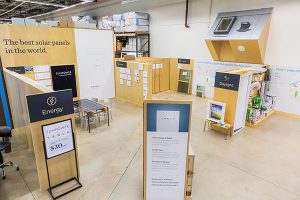
the home performance area of the store and talk with a home performance consultant.
For consumers to have a home that runs efficiently, TreeHouse recommends a variety of home improvement projects that best work together: proper insulation and air sealing; high-quality metal roofing; high-performance windows that save energy, block noise and increase natural lighting; and, if it makes sense, solar panels and a backup home battery to achieve net-zero energy.
The company integrates top-rated solar products, hires certified installers and has made a commitment to simplify and demystify the processfor homeowners.
“At TreeHouse, we sell solar like T-shirts,” Waitzkin says. “Our solar panels come in small, medium, large and extra large. That’s not something everybody does. We made it a core competency; we invested in the expertise; and we made it simple. For us, that made a lot of sense and has allowed us to be more credible to the homeowner.”
In regards to solar and battery-powered alternative energy, Waitzkin says TreeHouse only carries what they deem to be the best quality products from reliable brands.
“We only carry SunPower Solar and Tesla batteries,” he says. “Our customer segment is looking for quality, sustainability and long life. We want brands that are going to stand behind the product. Both SunPower and Tesla are a good fit.”
A customer can come in and sit down with a home consultant, and that consultant will map out specific recommendations to improve whole-home efficiency. For example, if a consultant discovers the customer’s roof needs repairs or should be replaced in a few years, a new roof should be a priority before investing in residential solar energy.
“All of our design services are free,” Waitzkin says. “We’ll do designs with no commitment and see where it goes. We want to help reduce the barrier for homeowners.”
Making Predictions For the Future
Although there is no crystal ball to predict where solar technology will be 15 years down the road, Waitzkin says he believes solar energy will continue to grow and move from the fringe to a more common energy alternative.
Costs are likely to continue to lower as equipment and installation prices drop. Yet even as solar technology becomes more commonplace, he doesn’t predict homeowners will completely fall off the electrical energy grid.
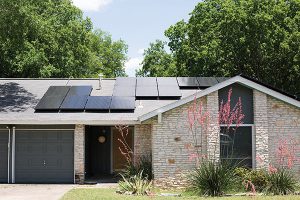
“The need for the electrical grid remains, because it’s not always sunny, and at night, panels are not generating power,” Waitzkin says. “However, I predict that batteries and solar products will be packaged together more frequently to act as a more well-rounded alternative energy solution.”
In order to see solar technology adopted by more homeowners, not only will technology need to improve, but an emphasis on improved aesthetics will need to be a priority for solar manufacturers, Waitzkin says.
“While I think solar panels look cool, some people think they’re an eyesore,” he says. “Some homeowners associations even restrict solar, and where it can be placed on the home, but I think that will be seen less as solar panel manufacturers embrace performance and the aesthetics of the panel design.”
When considering the future of solar and its presence in TreeHouse, Waitzkin says the technology will continue to grow.
“We’re going to continue to offer our customers solar options, and as the technology and prices improve even more, we’ll continue to strengthen our offering,” he says.
“No matter what project we help a customer with, we will continue to take a consultative approach to helping customers understand how their homes work,” he says. “It’s a fairly complicated machine, but we want to bring our expertise to customers so they can construct a smarter, healthier and sustainable home.”
For more insights into the solar energy industry, click here for a Q&A with the Solar Energy Industry Association’s senior communications manager, Alexandra Hobson. Then gain insights on the future of solar from Craig Lawrence, founder and managing director of Realization Ventures, click here.
 Hardware Retailing The Industry's Source for Insights and Information
Hardware Retailing The Industry's Source for Insights and Information


